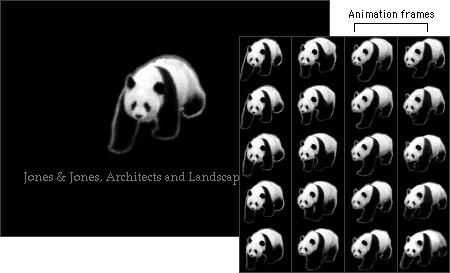 | |
AnimationMost Web animation requires special plug-ins for viewing. The exception is the animated GIF format, which is by far the most prevalent animation format on the Web, followed closely by Macromedia's Flash format. The animation option of the GIF format combines individual GIF images into a single file to create animation. You can set the animation to loop on the page or to play once, and you can designate the duration for each frame in the animation.  Animated GIFs have several drawbacks. One concerns the user interface. GIF animations do not provide interface controls, so users have no easy way to stop a looping animation short of closing the browser window. They also lack the means to replay nonlooping animation. Second, the animated GIF format does not perform interframe compression, which means that if you create a ten-frame animation and each frame is a 20 KB GIF , you'll be putting a 200 KB file on your page. And the final drawback is a concern that pertains to animations in general. Most animation is nothing more than a distraction. If you place animation alongside primary content you will simply disrupt your readers' concentration and keep them from the objective of your site. If you require users to sit through your spiffy Flash intro every time they visit your site, you are effectively turning them away at the door. There is a place for animation on the Web, however. Simple animation on a Web site's main home page can provide just the right amount of visual interest to invite users to explore your materials. There, the essential content is typically a menu of links, so the threat of distraction is less than it would be on an internal content page. Also, subtle animation such as a rollover can help guide the user to interface elements that they might otherwise overlook. Animation can also be useful in illustrating concepts or procedures, such as change over time. When you have animation that relates to the content of your site, one way to minimize the potential distraction is to present the animation in a secondary window. This technique offers a measure of viewer control: readers can open the window to view the animation and then close the window when they're through. |
|
|